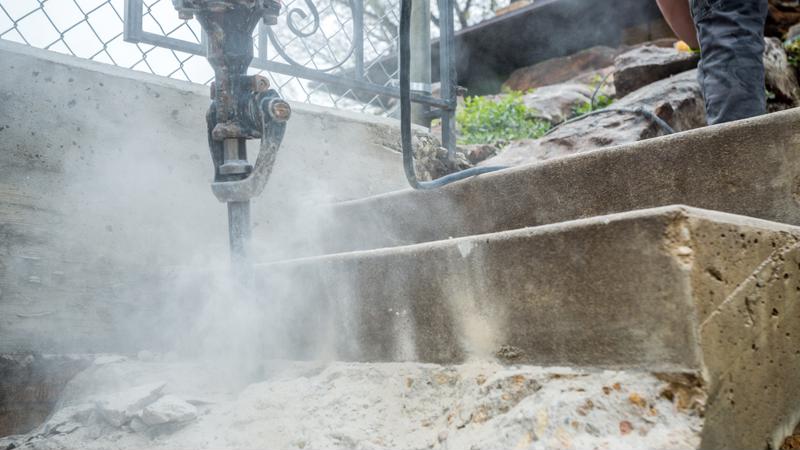In late March 2016, the U.S. Occupational Safety and Health Administration released its final rule regarding worker protection from the dangers of breathable silica dust.
With the implementation of the final rule, which has been debated for decades, OSHA estimated more than 600 lives will be saved annually, in addition to 900 or more cases of silicosis being deterred. The agency also stated the final rule will result in net benefits of $7.7 billion on a yearly basis.
The rule becomes effective June 23, 2016, but companies in various industries will have time to comply. Organizations in construction will need to meet the final rule’s compliance by June 23, 2017, while general industry and maritime have until June 23, 2018. Some of these compliance requirements will involve the implementation of modern air filtration systems to filter out the harmful particles.
Companies overseeing oil and hydraulic fracturing operations have more time to meet the requirements, as the deadline for this industry is not until June 23, 2021.
“More than 80 years ago, Labor Secretary Frances Perkins identified silica dust as a deadly hazard and called on employers to fully protect workers,” U.S. Secretary of Labor Thomas E. Perez said. “This rule will save lives. It will enable workers to earn a living without sacrificing their health. It builds upon decades of research and a lengthy stakeholder engagement process – including the consideration of thousands of public comments – to finally give workers the kind of protection they deserve and that Frances Perkins had hoped for them.”

New Regulations
The final rule will create a new permissible exposure, also known as PEL, for airborne crystalline silica of 50 micrograms per cubic meter of air over an eight-hour shift. These new measurements will become the standard for construction, maritime and general industries and are 50 percent less than the old PEL standards, and 80 percent less than the old standards in the maritime and construction industries, Bloomberg BNA stated.
Additionally, the 50 μg/m3 PEL was first recommended as a safe level back in 1974 by the National Institute for Occupational Safety and Health.
With these new PEL standards, approximately 2.3 million employees are exposed to silica dust while on the job. Of that number, 940,000 will still be exposed to levels exceeding the new standard.
What is Silica, and Why is it Harmful?
According to OSHA, crystalline silica is found in granite, soil, and sand, among other minerals. The agency also stated that quartz is the most common form of silica, as it’s typically found in stones, concrete, rocks, and more. Silica dust comes from the process of cutting, drilling, or sawing these materials.
Silica dust is especially dangerous to individuals when it is inhaled, the small particles can end up inside the lungs. Over time, the buildup of these particles may lead to serious illnesses, such as silicosis, kidney disease or lung cancer.
Silicosis is especially dangerous because currently, there is no cure for it. The disease forms when scar tissue forms on the lungs, which then reduces one’s ability to breathe, and in turn, an individual then becomes more vulnerable to other lung illnesses, such as tuberculosis.
In most instances, individuals will not develop silicosis until years after the exposure. OSHA stated that chronic silicosis doesn’t start to occur until after nearly 15 to 20 years of low to moderate exposure to silica. Symptoms are not immediately noticeable and individuals will usually have to undergo a chest X-ray. Over time, those with chronic silicosis will experience a shortness of breath while exercising, and as the illness worsens, periods of fatigue and chest pain will occur.
Workers exposed to high silica levels may develop accelerated silicosis, which may start affecting an individual 5-10 years down the line. Symptoms are more severe, as someone may lose weight and become physically weak.
“The new rule requires ventilation systems be used to help decrease the amount of silica dust.”
The Role of Ventilation
During an interview with EHS Today, masonry trainer Tom Ward said the new compliance requirements can generally be met with materials found at a local hardware store. Workers can also protect themselves by using water to limit the amount of silica dust created.
With regular training and proper safety gear, worksites can protect employees and lower silica levels at the same time. In fact, the new rule requires ventilation systems be used to help decrease the amount of silica dust. Fume extractors, for instance, can collect silica as a worker is completing their work at a personal workstation.
Larger ventilation systems can also be used to ensure any lingering particles are filtered out. The final rule is 1,772 pages, and among the document – currently available on the Federal Register – is a section dedicated to some of the costs of ventilation systems. This information will help employers know what to expect as the deadline for compliance approaches.
Additionally, companies can also contact Air Impurities Removal Systems to find out the air ventilation systems best suited for the removal of silica dust in order to preserve the health of workers.











Danger: Silica Dust! Proper Ventilation & Source Capture Are Key